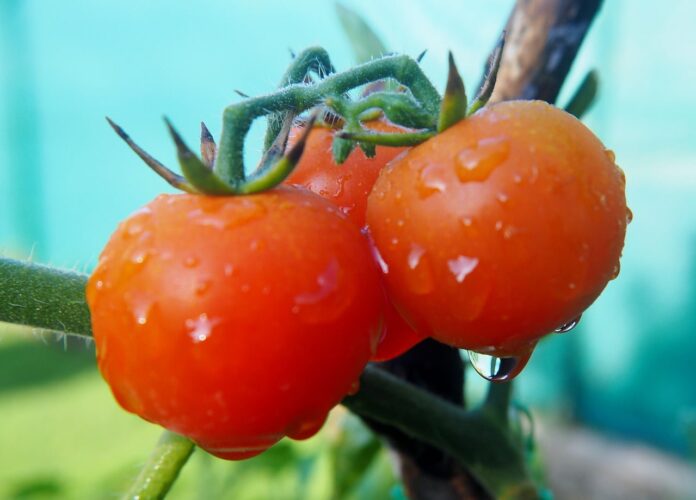With a tomato shortage making UK headlines with supermarket shelves left bare this week, it’s the perfect time to grow your own. Google data shows that UK-based searches for ‘tomato shortage’ have grown by 238% in the last week. The shortage has caused searches for ‘how to grow tomatoes’ and ‘tomato seeds’ to skyrocket by 909% and 235%, respectively, in the last week. However, getting started can be challenging for beginners. Craig Wilson, a gardening expert from Gardeners Dream, reveals their top tips for growing the perfect tomatoes at home.
Nothing is more satisfying than growing beautiful, fresh tomatoes in your garden. The best tomatoes are grown early. You can grow them indoors as early as January, transferring to the garden after two months when the weather is milder.
It takes about five months from seedling to harvest, so they should be ready in time for the summer.
What you need
To grow tomatoes successfully from seeds, you’ll need some starter trays and 3-4 inch pots to transfer them into after they begin to grow. You’ll also need rich, fertile soil or peat-free potting compost and a good spot with plenty of sun (around eight hours a day) and shelter.
Seeds
For beginners, we recommend tomato moneymaker seeds. They are one of the most reliable varieties of tomatoes, popular for being reliable and producing heavy crops of delicious tomatoes.
Sowing
Sow seeds from January to April, about ¼ inch deep. Use deep pots or trays, under glass, with a temperature above 18°C (around 25°C is best). Tomatoes are sensitive to cold and love heat, which helps them to grow. Keep the soil moist but be careful not to overwater, making the soil soggy and inhibiting growth.
Once seedlings are large enough to handle, around five inches tall, transfer them into individual containers or a seedbed. Once the last frost has passed, it is safe to plant them outside. If night temperatures drop below freezing, keep them inside for now.
Prepare your patch
To ensure your tomatoes have the best chance of growing plump and juicy, you need to check your soil is of the highest quality possible with four easy steps:
- Remove any larger weeds and debris
- Treat soil with weedkiller
- Dig over the soil to a depth of at least 12 inches, then rake until the ground is level, which aerates the soil, helping oxygen and moisture reach the roots to encourage growth.
- Before planting, water the soil and work in a fertiliser
Tip: you can create your compost using old fruits, vegetables, and coffee grounds, which will help fertilise your plants at no extra cost.
How to grow
Dig deep enough for the soil to cover about two-thirds of the plant, encouraging strong roots and healthy growth. Each plant should be around 20 inches apart in rows, and the spacing of each row should be double that. Make sure to water the plants consistently. When watering, check the soil’s moisture; the water should go around ten inches deep.
Tomato trellises and support stakes can help your plants to grow. Don’t grow tomatoes near cabbage, fennel, corn, or potatoes, as this will harm the tomatoes’ growth.
Maintenance
Water regularly and feed weekly with a high-potash fertiliser once the plants begin to flower.
Side shoots may appear on your tomato plants. You can prune these, which helps reduce the risk of disease and how much support is needed, but it’s not necessary.
Harvest
It is safe to harvest tomatoes in the summer, from July to October. Tomatoes ripen after picking but wait until they are beginning to change colour before harvesting. They should come off the vine easily. If not quite ripe, keep them in a well-ventilated area at home until they are ready to eat.
Craig Wilson is a gardening expert from Gardeners Dream.
Credit to https://www.gardenersdream.co.uk/ who provided this Post.
Help keep news FREE for our readers
Supporting your local community newspaper/online news outlet is crucial now more than ever. If you believe in independent journalism, then consider making a valuable contribution by making a one-time or monthly donation. We operate in rural areas where providing unbiased news can be challenging. Read More About Supporting The West Wales Chronicle

























